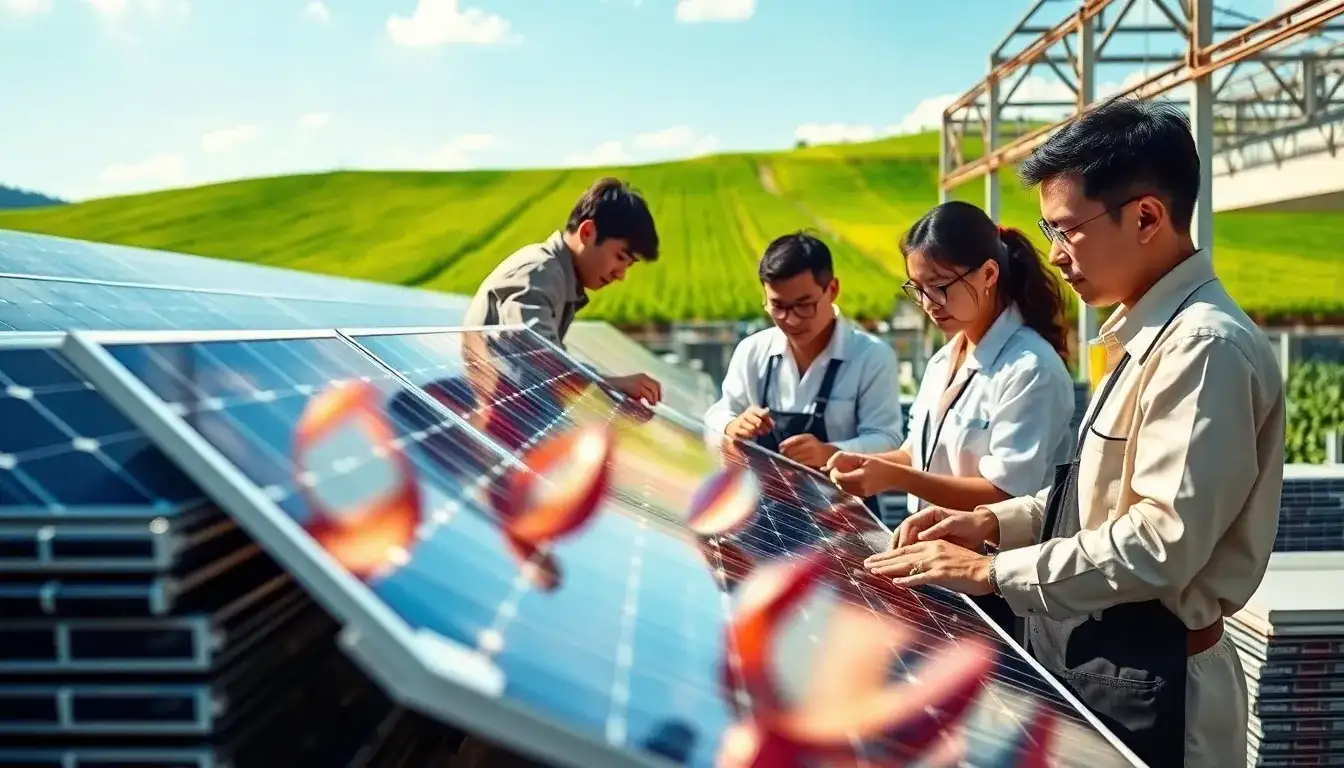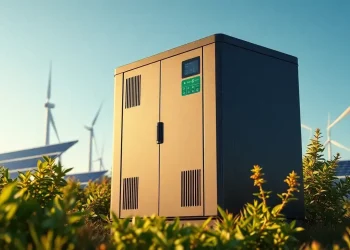
Why has the photovoltaic industry, which has been suffering through a harsh winter, suddenly turned around with module prices approaching 0.9 yuan?
As we approached the end of the previous year, the industry was troubled by prices dropping below production costs. However, since February, leading companies have started raising prices by a few cents, and soon after, module prices surged past 0.7 yuan. According to the latest data from InfoLink, the price of mainstream distributed photovoltaic modules reached 0.8 yuan/W in March, marking a rebound of over 33% from the low point of 0.6 yuan/W at the end of 2024. Longi Green Energy’s Hi-MOX10 anti-dust modules are quoted at 0.85-0.9 yuan/W, the highest in nearly two years. On March 20, InfoLink’s weekly price analysis noted significant increases in distributed prices and a high volume of execution deliveries. The execution price for TOPCon modules reached between 0.68 and 0.8 yuan, with an average price of 0.73 yuan. HJT module prices are approximately between 0.76 and 0.85 yuan, with concentrated project execution prices falling between 0.76 and 0.78 yuan. In the BC segment, some N-TBC prices are currently around 0.73-0.82 yuan, with concentrated project prices around 0.73-0.76 yuan.
Furthermore, upstream components such as N-type battery cells and silicon wafers, along with inverters and encapsulants, have also seen price increases. For instance, TOPCon battery cells of size 182*210mm have risen consistently for five weeks, with an average increase of 0.05 yuan/W. The G12RN silicon wafers have seen two price increases since March, totaling 0.1 yuan/W. The price of photovoltaic-grade EVA has risen by 248.57 yuan per ton over the past two weeks. Additionally, InfoLink reports that silicon material prices are poised to increase, with expectations for March prices to be in the range of 39,000 to 42,000 yuan/ton.
After enduring overcapacity, fierce competition, and low-price selling, the photovoltaic industry has experienced an unexpected turnaround. Does this indicate a rebound for the industry? Is there a risk that prices might plummet again once the rush for installations subsides?
As analysts debate when the photovoltaic sector will emerge from its winter, modules are reportedly sold out. Longi Green Energy’s President of Distributed Business for China, Niu Yanyan, recently stated that there is currently a tight supply of all models of their modules. Other leading companies, including Trina Solar, Tongwei Co., and Canadian Solar, have also seen significant depletion in their inventory of popular models, with production lines operating on a just-in-time basis. Delivery cycles range from as short as one week to a maximum of two weeks. Some top-tier module manufacturers have indicated that their orders are already booked until the second quarter. To meet rising market demand, photovoltaic production bases that recently conducted large-scale layoffs are now rapidly hiring again.
With major manufacturers facing a supply crunch, second- and third-tier companies are also busy accommodating demand. A medium-sized module factory in Jiangsu is currently shipping out 300 trucks daily, yet still cannot satisfy demand. A third-tier company in Hebei has all its production lines running 24 hours a day, with orders extending into April. A screenshot circulating online from a trader’s social media indicates that all brands of module futures orders have been halted, only accepting spot orders, and advising potential buyers not to bargain but simply to inquire about availability.
Some individuals have rushed to module factories only to find long lines waiting to pick up their orders, with some having to wait days while their number was over a thousand. Traders hoarding stock have further fueled this market surge, with one trader claiming to have stockpiled half of a small target’s worth of modules. Various strategies are being employed to secure immediate stock, including leveraging relationships to jump the queue or being open to products outside their preferred options. Some downgraded products from major manufacturers are also being quickly processed, with expectations that they will hit the market within 15 days.
Moreover, orders for popular models priced below 0.68 yuan/W have been canceled in large numbers, with requests for increased payments even for pickup. For customers in urgent need of modules, it seems there are no alternatives—switching suppliers still yields prices above 0.7 yuan/W. However, some traders report applying for refunds due to delays, as one investor noted that a significant project was lost due to the inability to secure modules, resulting in millions in losses. Some traders have even faced lawsuits from clients.
In addition to supply shortages, issues of counterfeit branding have also emerged in the market. Recently, both Trina Solar and Aiko Solar issued statements warning of the risks associated with purchasing modules from unverified sources, which may compromise product quality, after-sales service, and consumer rights. An industry insider noted that the previous production restrictions led to major manufacturers being unable to keep up with demand and having to outsource production. For these contractors, selling at market prices above 0.7 yuan is more appealing than the 0.65 yuan they receive for contract manufacturing, resulting in them producing and quietly selling their own branded products.
The market’s sudden surge can be attributed to two main factors: changes in supply-demand dynamics and a revival of overseas markets. The domestic policy changes, which include the National Energy Administration’s guidelines on distributed photovoltaic development and the National Development and Reform Commission’s notification on market-oriented reform for new energy pricing, have played a significant role. The former establishes a deadline of May 1, 2025, for new policies, which will affect the profitability of commercial distributed photovoltaic projects. Projects connected before this date can enjoy full grid connection under old policies, while those connected later will face more uncertainties under new regulations.
Moreover, the recovery of overseas markets, particularly in Europe, has been significant. With inventory depletion and numerous new projects in Eastern European countries, the European market for 2025 is seen as promising, driving a surge in the photovoltaic procurement confidence index. Experts predict that the installed capacity in Europe may double by 2025. As a result, manufacturers are emboldened to increase prices, as evidenced by a 5%-10% rise in average prices of photovoltaic modules in Europe compared to the same period in 2024.
In response to the recent supply surge, the entire photovoltaic industry has reached a consensus to limit production and maintain low operating rates, which has effectively reduced inventory levels. According to statistics from TrendForce, as of early January, N-type silicon wafer inventories had decreased to between 1.6 and 1.8 billion pieces. Similarly, the battery cell inventory was noted to be 7.85 GW by February 5. Additionally, module inventories were below 50 GW at the beginning of January. Following the market surge, these inventories have been rapidly cleared.
The supply-demand imbalance led to price increases, further stimulating traders to hoard and intensifying supply pressures in the market. InfoLink’s data indicates that from January to March, domestic production of modules was effectively controlled. The reduction of overseas inventory has also alleviated some supply issues, although older models remain available. Due to the urgency to complete projects before the April 30 deadline, centralized project suppliers are prioritizing large projects, further squeezing the supply for the distributed market.
While the price increases from the installation rush benefit the profits of photovoltaic companies in the first two quarters, it also raises questions about sustainability. Currently, the minimum production cost for photovoltaic modules exceeds 0.72 yuan, and if prices stabilize around 0.8 yuan, manufacturers will see a profit margin of approximately 0.08 yuan per watt. Based on estimates from first-half 2024 sales rankings of leading manufacturers, maintaining last year’s shipping volume could yield around 1.176 billion yuan in profits. Although this profit is limited compared to last year’s losses, it sends a positive signal that leading companies may collectively turn profitable in the first half of the year.
However, maintaining the price of 0.8 yuan/W poses challenges for the industry. If sustained, it could revive obsolete production capacities that were previously phased out, jeopardizing efforts to reduce overall capacity in the photovoltaic sector. Industry experts are now questioning whether the price of 0.8 yuan/W can hold steady.
According to industry insiders, major manufacturers have recently stabilized their operations and are deliberately pushing for price increases. InfoLink’s statistics indicate that to fulfill supply demands, March’s industry operating rate has increased by 24%, with an expected production of 52 GW, which may soon alleviate the tight supply situation.
Another industry observer suggested that further price increases may be difficult, predicting a trend towards reductions. Some brands without strong distributor networks have not raised prices, indicating that raw material costs can support current pricing. The top ten brands are expected to replenish their inventories quickly, and to facilitate rapid inventory turnover, attractive pricing will be necessary. Additionally, orders from contract manufacturers have been released at lower prices, which will impact the prices of branded products.
From the end-user perspective, some residential brands have begun to wind down operations, stopping order acceptance and deliveries. “The highest price EPCs can accept is around 0.8 yuan; anything higher is unrealistic,” stated one distributor, who reported halting inventory accumulation and beginning to reduce stock for deliveries. There is a consensus among industry insiders that, following the installation rush, if no significant market growth occurs, prices will certainly drop, leaving companies to merely profit for a few months. The sales volume in the latter half of the year will largely depend on the overseas market.
In conclusion, while the current rise in prices may provide temporary relief to the photovoltaic industry, it is essential to maintain a cautious outlook regarding sustainability and potential long-term impacts on the market.







